Table 1.
Types of common pavement distress (Miller and Bellinger 2014).
| Distress Type | Severity Levels | Causes | |
|---|---|---|---|
| Crack | |||
| Alligator |
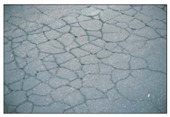
|
Low (no or few interconnections) Moderate (forming a pattern) High (severely spalled) |
Repeated traffic loadings |
| Block |
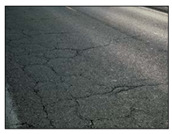
|
Low: width ≤ 6 mm Moderate: 6 mm < width ≤ 19 mm High: width > 19 mm |
Repeated traffic loadings |
| Longitudinal |
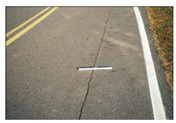
|
Low: width ≤ 6 mm Moderate: 6 mm < width ≤ 19 mm High: width > 19 mm |
Poor joint construction or location |
| Transverse |
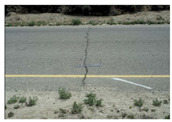
|
Low: width ≤ 6 mm Moderate: 6 mm < width ≤ 19 mm High: width > 19 mm |
Axial loading or temperature change |
| Pothole and Patch | |||
| Pothole |
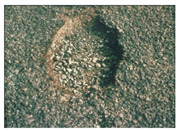
|
Minimum diameter of 150 mm Low: depth ≤ 25 mm Moderate: 25 mm < depth ≤ 50 mm High: depth > 50 mm |
Water infiltration into cracks |
| Patch |
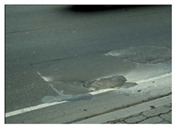
|
Surface ≥ to 0.1 m2 Low: rutting ≤ 6 mm Moderate: 6 mm < rutting ≤ 19 mm High: rutting > 19 mm |
Lack of preventative maintenance |
| Surface Deformations | |||
| Rutting |
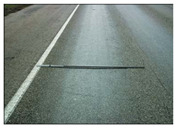
|
Not applicable | Heavy load, wheel path, poor mix |
| Shoving |
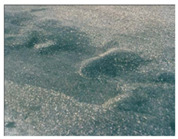
|
Not applicable | Plastic movement of pavement surface, weak subgrade, improper rolling |
| Surface Defects | |||
| Bleeding |
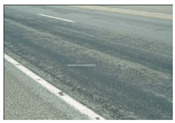
|
Not applicable | Excessive binder, low air-void content |
| Ravelling |
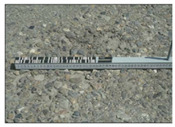
|
Not applicable | Weather, installation, aggregate separation, mechanical dislodging |
| Polished Aggregate |
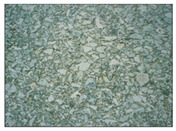
|
Not applicable | Aggregate with insufficient flakiness and excessive friction on the road by vehicles |
